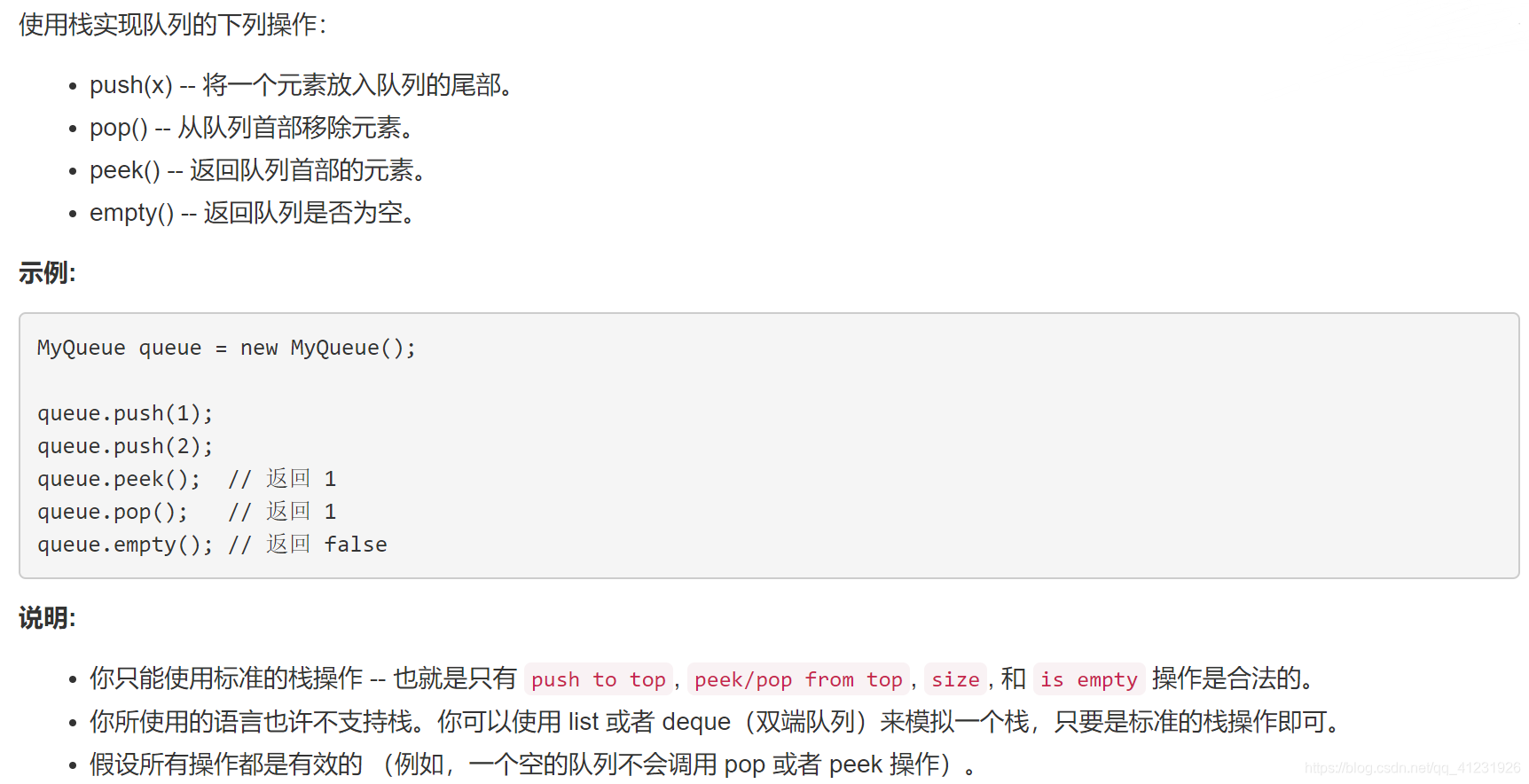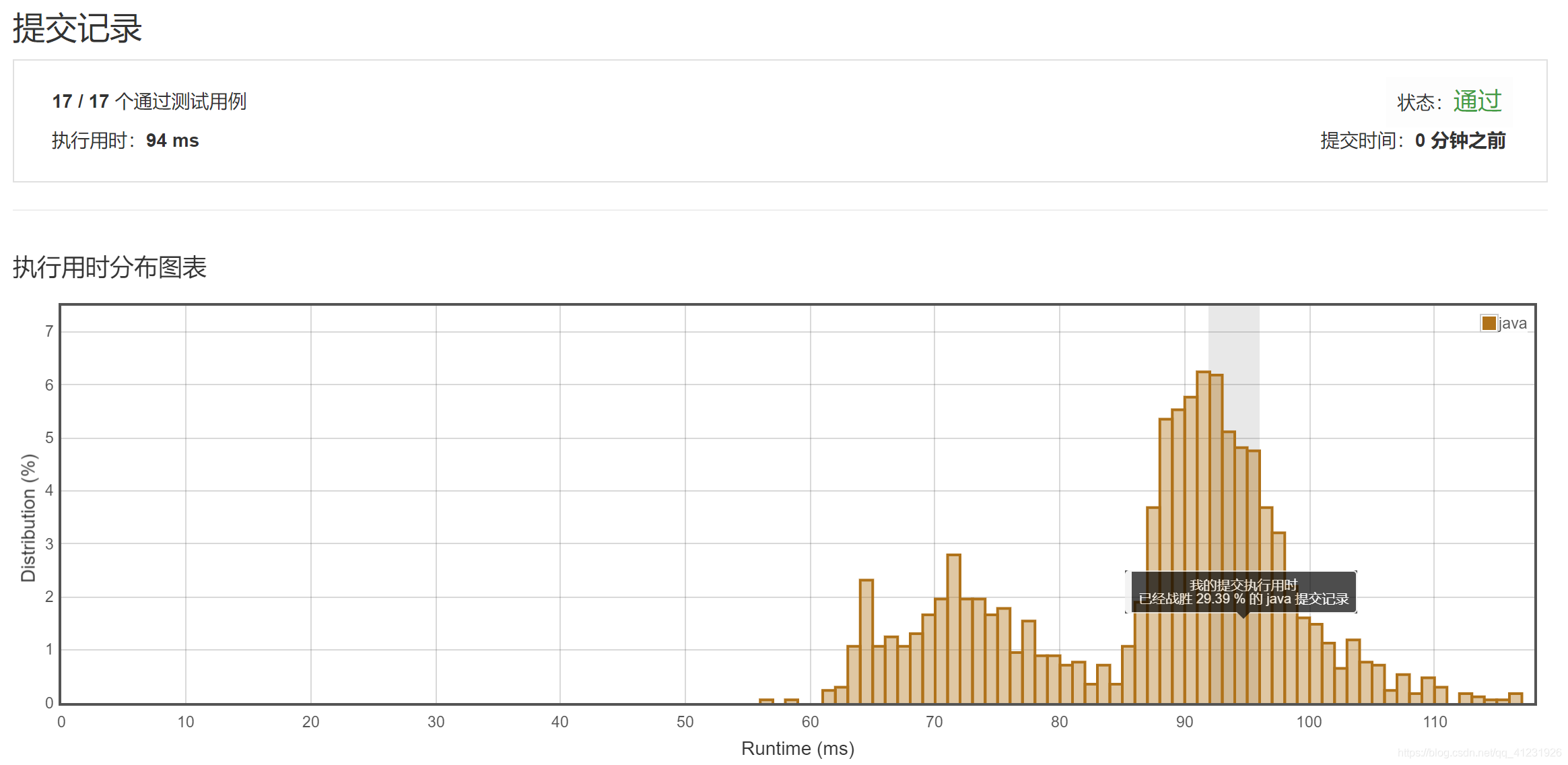我的LeetCode代码仓:https://github.com/617076674/LeetCode
原题链接:https://leetcode-cn.com/problems/implement-queue-using-stacks/description/
题目描述:

知识点:栈、队列
思路:双栈实现队列
push(x)和empty()的时间复杂度是O(1)。
pop()和peek()的时间复杂度是O(n),其中n为队列中的元素个数。
JAVA代码:
public class MyQueue {
private Stack<Integer> stack1;
private Stack<Integer> stack2;
/** Initialize your data structure here. */
public MyQueue() {
stack1 = new Stack<>();
stack2 = new Stack<>();
}
/** Push element x to the back of queue. */
public void push(int x) {
stack1.push(x);
}
/** Removes the element from in front of queue and returns that element. */
public int pop() {
while(!stack1.isEmpty()) {
stack2.push(stack1.pop());
}
int result = stack2.pop();
while(!stack2.isEmpty()) {
stack1.push(stack2.pop());
}
return result;
}
/** Get the front element. */
public int peek() {
while(!stack1.isEmpty()) {
stack2.push(stack1.pop());
}
int result = stack2.peek();
while(!stack2.isEmpty()) {
stack1.push(stack2.pop());
}
return result;
}
/** Returns whether the queue is empty. */
public boolean empty() {
return stack1.isEmpty() && stack2.isEmpty();
}
}LeetCode解题报告:






 本文介绍了一种使用两个栈来实现队列的方法,详细解析了push、pop、peek和empty等队列操作的具体实现,以及它们的时间复杂度。通过JAVA代码示例,展示了如何在LeetCode上解决Implement Queue using Stacks问题。
本文介绍了一种使用两个栈来实现队列的方法,详细解析了push、pop、peek和empty等队列操作的具体实现,以及它们的时间复杂度。通过JAVA代码示例,展示了如何在LeetCode上解决Implement Queue using Stacks问题。
















 586
586

 被折叠的 条评论
为什么被折叠?
被折叠的 条评论
为什么被折叠?








